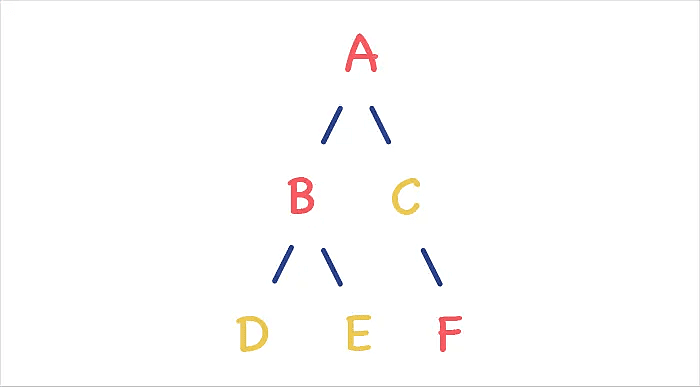
- What is Breadth First Search or BFS for a Graph?
- What is breadth-first search algorithm or BFS graph?
- How to implement Breadth First Search Algorithm or BFS Algorithm?
- Different Complexities in Breadth First Search Graph
- What are the breadth first search problems that can be solved using the algorithm?
- What are the applications of BFS?
- How can we improve the Breadth First Search Algorithm?
- Limitations of Breadth First Search Algorithm
- Wrapping Up!

Breadth first search or BFS for a graph is amongst the most popular data structures in computer science. BFS graph offer numerous applications in multiple fields such as network design, social media analysis, and transportation systems. In this article, we will be exploring breadth first search or BFS for a graph in detail. It will include its definition, implementation, and most importantly its times and space complexities.
Therefore without any delay, let’s start with the introduction of breadth first search or BFS for a graph.
What is Breadth First Search or BFS for a Graph?
Breadth first search algorithm is a traversal algorithm. It starts from the root node and explores all the neighboring nodes. It does it by traversing the existing depth level and then later on moving to the next depth level. The process continues till the point all the nodes in the graph have been traversed. BFS graph is primarily used to find the shortest path between two nodes. This is done in an unweighted graph. BFS algorithm is also used in solving problems that involve traversing graphs in a systematic way.
To further define it….
BFS algorithm traverses a graph in the breadth-first search order. It visits all the nodes at its current depth level and moves on to the next depth level. It does it by visiting depth level 1 before moving on to depth level 2. The process repeats until all the nodes are visited.
What is breadth-first search algorithm or BFS graph?
The breadth first search algorithm or BFS algorithm can be implemented using a queue data structure. Below are the steps for BFS algorithm. Let’s have a look:
- Step 1: Enqueue the starting node to the queue
- Step 2: Mark the starting node as it is visited
- Step 3: If the queue is not empty
- Step 3.1: Dequeue the front node from the node
- Step 3.2: For each adjacent node of the dequeued node.
- Step 3.2.1:If the adjacent node is not visited.
- Step 3.2.1.1: Enqueue the adjacent node to the queue.
- Step 3.2.1.2: Mark the adjacent node as visited.
How to implement Breadth First Search Algorithm or BFS Algorithm?
Let’s have a look at the example of breadth first search example using the graph below:

Let’s start with node A. The initial step would be to enqueue node A. Once node A is visited, it’ll be market. The queue will now look like this: [A]
After that, we will dequeue node A and start with enqueuing the neighbors, node B, and node C. Once we mark nodes B and C as visited. The queue will start to look like this: [B, C].
After that we will dequeue node B and start enqueing about the neighbors nodes D and E. Now, we will mark nodes D and E as visited. The queue will now start to look like this: [C,D,E].
Now, we will start with node C and enqueue its neighbor, node F. We will mark node F as visited. The queue now looks like this: [D, E, F].
Finally, we will dequeue the node D and enqueue its neighbor, node B. However considering that node B has already been visited, we won’t add the queue again. Later on, we will then dequeue the node E and enqueue its neighbor, node B. The important to note would be to not add node B considering it has already been visited. Now, the queue will start to look like this: [F].
Now, we will dequeue the node F until there are no more nodes to visit. Now, the BFS algorithm traversal order would be A, B.
Different Complexities in Breadth First Search Graph
There are primarily two complexities that are considered in Breadth First Search Graph. These are:
1. Time Complexity of BFS Graph
The time complexity of BFS is O(V+E). Here V is the number of vertices while E is the number of edges in the graph. It is because the BFS graph visits each vertex and edge just once. In the worst-case scenario, the BFS graph visits all the vertices and the edges. This gives the complexity i.e. O(V+E).
2. Space Complexity of BFS Graph
The space complexity of the BFS graph in this case is also O(V+E). Also, just like V here represent the number of vertices and E is the number of edges in the graph. In this case, we use the queue data structure for the nodes in the graph. Here, the maximum number of nodes in the queue at any given time is equal to the number of vertices plus the number of edges in the graph.
What are the breadth first search problems that can be solved using the algorithm?
Some common problems that can be solved using BFS includes multiple case scenarios. These are:
- Shortest Path
- Connected Components
- Bipartite Graph
- Word Ladder
- Islands in a Matrix
What are the applications of BFS?
Breadth first seach algorithm has multiple applications in the field of computer science and other fields. Some of the most common applications of BFS algorithm includes:
- In an unweighted graph, BFS algorithm can be used to find the shortest path between two nodes
- Systematic traversing of a graph
- Solving different types of puzzles such as 8-puzzle, Rubik’s cube, etc.
- Traversing the network and packet routing in computer networks
- Analysis of social media
- Implementation in the transportation systems to find the shortest path
How can we improve the Breadth First Search Algorithm?
BFS graph and BFS algorithm is primarily used to find the shortest path between the two nodes. There are multiple ways using which we can improve the performance of BFS. One way would be to use a bidirectional BFS algorithm. It starts from both the source and the destination nodes. After that it searches for a path that connects them. Another way of doing this would be to use A* search algorithm. It uses the heuristics to guide the search to find the shortest path more efficiently.
Limitations of Breadth First Search Algorithm
Despite being one of the most graph traversal algorithm, BFS algorith still has some limitations. For instance, it can only be used to find the shortest path in an unweighted graph. In case of weighted graph, it won’t find the shortest path. Another limitation of BFS would be that it requires a lot of memory to store the nodes in the graph. This is especially the case with large graphs.
Note: Want to learn about the top blockchain app development companies, here’s a report to sort you out!
Wrapping Up!
Breadth first search or BFS for a graph is a powerful algorithm that can be used for finding the shortest path. It provides value in the case of a weighted graph and can traverse a graph in a systematic manner. This is the reason it can be used for solving problems such as Rubik’s cube. It also has other numerous applications along with some limitations and high memory usage. However overall, it is the best solution for the problems it can solve.


















